The Making of the Game Vampire: The Masquerade – Bloodhunt.
Vampire: The Masquerade has undergone a long and challenging Journey over the years. The series was born in 1991 as a tabletop role-playing game, part of Mark Rein-Hagen’s “World of Darkness” series. “The Masquerade” first made its appearance in video games with the release of Vampire: The Masquerade – Redemption by Nihilistic Software. However, it may have truly left its mark on the history of games only in 2004 when Troika Games released the outstanding RPG Vampire: The Masquerade – Bloodlines.
Despite Bloodlines being one of the best vampire video games ever released, it remained the last installment in the series for a long time. After its release, the game was plagued with issues – even today, a fan-made patch is required to fix many of its problems when reinstalling the game. Furthermore, Bloodlines faced stiff competition when it was released alongside Half-Life 2, and in that battle, it ultimately did not win, resulting in poor financial performance. Troika Games closed its doors in 2005.
Despite this, over the years, the game has become a cult classic. While various attempts were made to create vampire-themed video games, perhaps none of them have garnered such a reputation and dedicated fanbase as Bloodlines. Fans, after Troika Games’ demise, continued to support the game’s life by creating patches and adding cut content to the final release.
It seems that the series’ efforts to create video games have come to an end. (We won’t dwell on the unproductive CCP Games leadership.) It wasn’t until 2019 that the franchise was revived, releasing several new titles, including the highly anticipated sequel to Bloodlines.
The tumultuous development of Bloodlines 2 has led fans to wait even longer for the direct sequel to the classic 2004 game. The game’s publisher, Paradox Interactive, severed ties with developer Hardsuit Labs in February 2021. While the game appears to have survived cancellation, it’s fair to assume that fans will have to wait a little longer.
Fortunately, the franchise is not as cursed as it may seem from its history. Although a direct sequel may be further on the horizon than originally anticipated, the franchise has risen from the grave thanks to a series of smaller indie games. If even that doesn’t satisfy you, Sharkmob has something much grander coming from Triple-A, set to release later this year – Vampire: The Masquerade – Bloodhunt.
What Is Bloodhunt?
Bloodhunt is a free-to-play battle royale developed and published by Sharkmob. It’s undeniably a new direction for the franchise, breathing new life into a classic from the early 2000s. However, the Sharkmob team is keenly aware of the IP’s legacy and remains committed to striking a delicate balance between honoring what came before and advancing the franchise in a new direction.
“We want to be respectful of the fans; that’s always been issue number one,” says Cortes. “As you know, with all major IPs, like ‘Star Wars’ or ‘Lord of the Rings,’ it all belongs to the fans. You may have writers and other people who are paid, but it’s the fans who ultimately decide if it’s good or not.”
“We’re well aware of that, and we wanted to do something new for the genre. And, of course, when it comes to action, it’s already part of the IP and the story.”
“But if you look at how it was portrayed in role-playing games before… for example, what you’re saying about Bloodlines. It’s a classic RPG where you develop your character, and there are combat moments, but our game is more of a full-blown war. It’s still part of the IP, but it’s different from what people expected.”
In this regard, you have to have some sympathy for Sharkmob. To be clear, the early access period of Bloodhunt was well-received by fans, and initial signs indicate that the team has done an excellent job adapting the franchise to the battle royale mode. For players looking for a frenetic battle royale experience with vampire abilities, there’s no better option. But for those longing to return to the roots of the classic RPG, well… Sharkmob is not to blame for Bloodlines 2 not being out yet.
“We knew there might be an impression that we’re just transferring the IP to a battle royale, but that’s not for us,” says Cortes. “This is really something that was naturally integrated into the game. It’s all about dark fantasy. You have all these cool abilities, and you get to see vampires engaging in full-scale warfare against other vampires!
“Of course, we would have loved for there to be another role-playing game for the fans, and we would have presented a new approach to the IP… But I think this approach is still relevant and cool.”
A LOOK INTO THE FUTURE
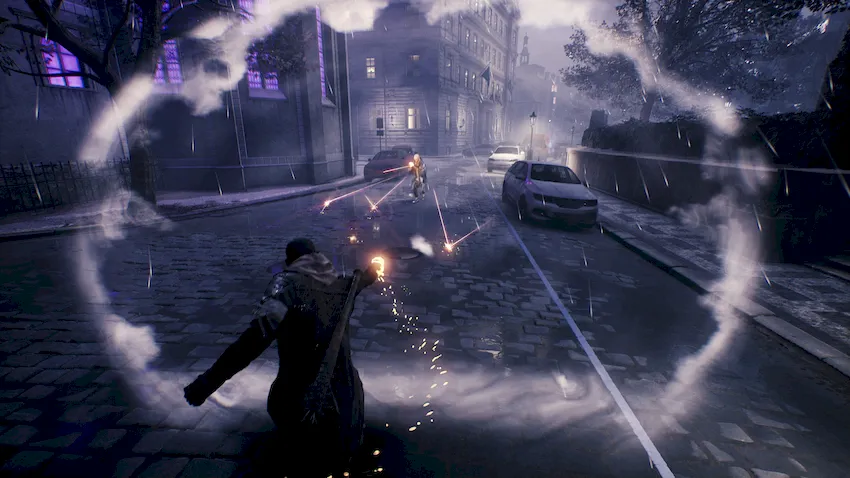
This viewpoint is more than justified—it’s canon. Perhaps Bloodhunt isn’t a classic role-playing game, but it still introduces new elements into the game universe. For example, the introduction of The Entity, a secret Vatican vampire hunting agency, is now part of the fifth edition official rulebook for Vampire: The Masquerade.
The game’s setting, Prague, and the vampire community within it have also become part of the Vampire: The Masquerade universe. This is a new setting for a series that has typically been oriented toward the USA, allowing Sharkmob to freely create its own world.
And that’s probably for the best. Even as a devoted fan of Bloodlines, that game came out a long time ago. So much has changed in the industry, so much has changed in the world since 2004. However much I may be nostalgic for it, there’s little point in being tied to the past. Also, not coincidentally, Vampire: The Masquerade – Bloodlines was such a failure that it became the last game for Troika Games.
“We’re doing this game in an IP that’s a bit stagnant,” Cortes says. “There’s a lot of legacy, but there haven’t been many new products, there haven’t been many new books. So, we had to think about it. Yes, we respect the past, we respect the legacy. But at the same time, it has to be a modern game. We didn’t want to use the look of Bloodlines or even the original Vampire the Masquerade, because it was created in the ’90s. It has a ’90s atmosphere, and we wanted to do something closer to 2020s, something more modern and understandable to today’s consumers.”
Prague emerged, and Sharkmob lovingly and meticulously recreated it to provide a true triple-A experience and steer the franchise in an exciting new direction.
“We wanted to do something new,” Cortes says. “Even in the choice of the city. Bloodlines was very oriented toward the USA.” “We thought, should we shoot another American movie, or make it more international? And choosing Prague meant that, although we respect the past, we can have our own vision. Plus, many of the people who worked on the project just finished a game set in New York, so we wanted to do something different!”
“Prague was the perfect choice because there are so many vampire stories there. It’s a modern city, but it looks very Gothic—more Gothic than in other games set in the USA.”
Prague could be the perfect choice, but recreating it is a different matter. The adaptation of the city carried out by Bloodhunt is realistic, although not a direct 1:1 replica. Don’t expect to treat it as a vampire-infested tourist center, but those familiar with Prague will likely recognize several familiar landmarks.
Recreating an entire city is a massive task, especially when the team aims for a truly triple-A experience. Add to that a relatively small team size for such an ambitious game, and the task becomes even more daunting.
THE GREAT HOUDINI
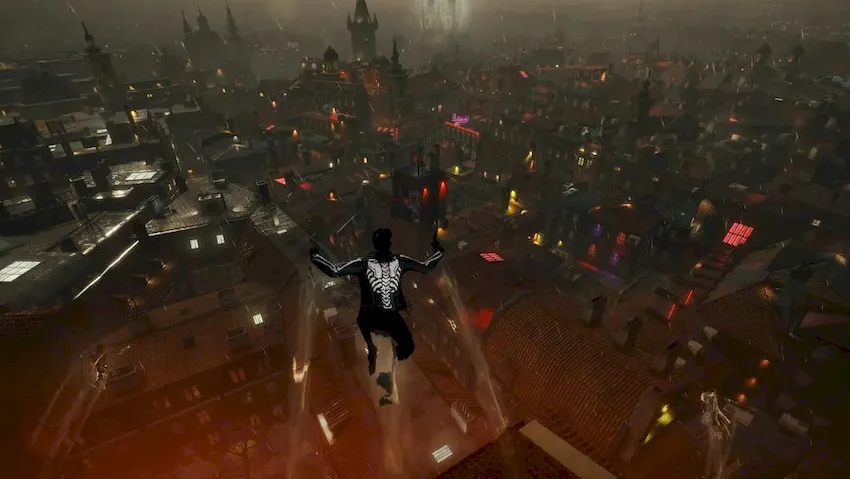
That’s why the team became so enamored with the procedural 3D program Houdini, which has a suite of procedural generation tools that allowed Sharkmob to create a Gothic setting worthy of a triple-A game relatively effortlessly. Danial Rashidi explains.
“When we started working on this game, the company had far fewer people,” Rashidi says. “It was a very ambitious plan to create Prague. We didn’t know how big it would be, but we knew we needed some tools to be able to manage the city’s construction without a massive art department. So we invested in procedural tools quite early on and evaluated several different approaches, including Houdini.
“We didn’t start using Houdini from the beginning; we began with our own tools. It was interesting to explore and create systems for city building. It was great collaboration; we worked a lot on this.”
“Later on, we started using Houdini in various areas. For example, the sky in the game is modeled and generated in Houdini. It was very fun to sit with the art director when he said, ‘I want it to be a bit cloudier,’ and we would model the cloud environment, move the moon a bit, and then render it all and put it into the game.”
As Rashidi explains, the technologies that Sharkmob developed during the development of Bloodhunt are expected to serve them well long after the game’s launch.
“We use Houdini quite frequently now, and we’ve built a photogrammetry pipeline. We have several different technology directions where we’re investing significant resources. One is photogrammetry, both for Bloodhunt and future games. Another one is motion capture. We have a very nice, large motion capture studio where we can record all our stunts and cool animations.”
As part of the photogrammetry development, Rashidi shows us a scan of one of the numerous statues found in Prague, which exudes so much vampire style that it just begs to be in the game.
“We have millions of statues, it feels like,” Rashidi says. “Prague is such a good city for this, there’s so much art in architecture, and statues are everywhere. So we’ve scanned quite a few different statues, and this is one of those high-resolution meshes. It has millions of polygons, which is too much for rendering in the game. And there are many issues that come with 3D-scanned assets; they require quite a bit of cleanup.”
“So we need a process, and previously, this process was manual, taking several days to go through all the different steps required to get the asset to a game-ready quality.”
However, thanks to Sharkmob’s technologies and the use of Houdini, this workload has become much more manageable.
“It takes the high-resolution mesh and then creates one that’s much better suited for the game,” Rashidi says. “The number of triangles we can render in the game per frame has to be within our budget. It reviews and analyzes the mesh and gives artists control over its level of detail. And then it automatically generates UVs for that mesh.”
“Previously, this process could take several days. This process takes minutes because it all happens in Houdini; it’s a procedural system that we created. It significantly reduces the time. I sat with one of our photogrammetrists and apologized because it took just a few minutes to create something. They said, ‘Why are you apologizing? It used to take me days to achieve this result!’ It’s very satisfying to work with a system that brings so much benefit to artists, and we can quickly get materials into the game.”
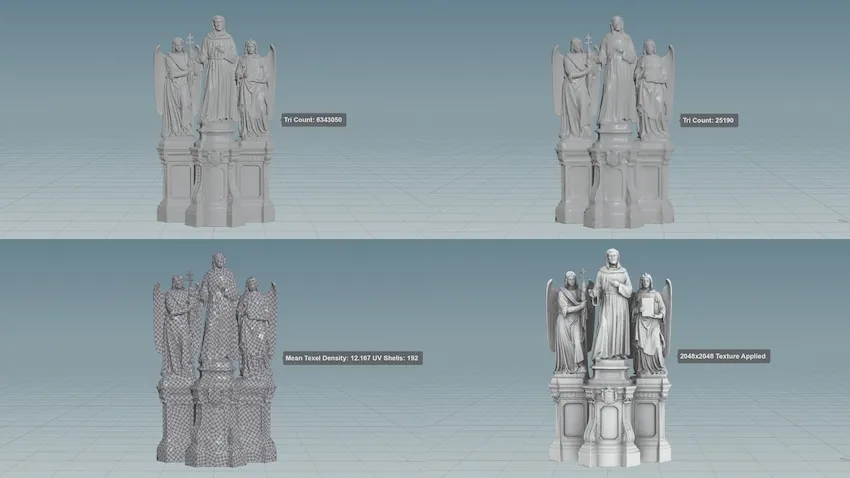
An example of one of the numerous statues in the game that the team can make game-ready faster than ever before.
STANDING OUT AMONG COMPETITORS
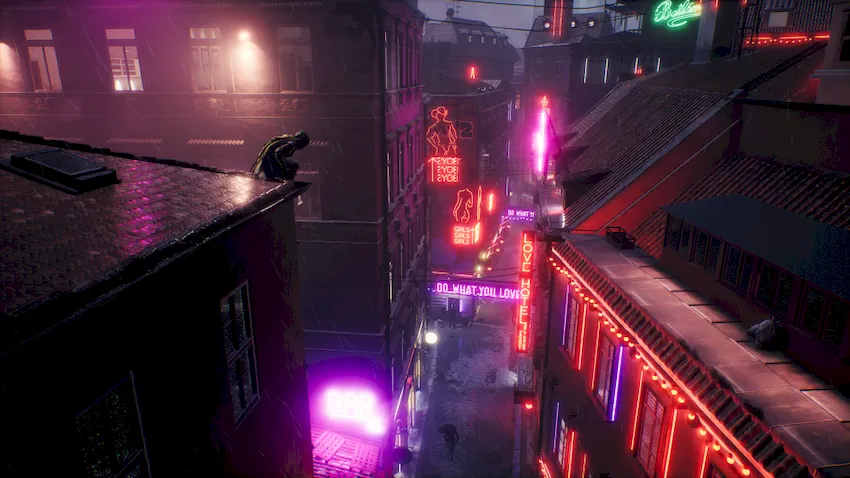
This procedural approach helped Bloodhunt stand out in the crowded battle royale space. It’s hard to call this genre underfed: some of the biggest names in gaming occupy the top spots and arguably consume most of the oxygen. The ability to fight on rooftops in a real city is unquestionably a compelling selling point in a genre predominantly populated by flat, somewhat template-looking islands.
“When we started, most battle royales of this scale typically represented an island with flat terrain, with a few trees and houses,” Cortes says. “What we wanted to do, creating a game with such a detailed city, was a bit insane. But that’s exactly what we wanted – to have a different type of playing field, to be able to move anywhere. All roofs, all buildings, everything you can climb and explore. We had high hopes for Danial and the tech team; it’s very, very challenging to do. Streaming, movement… just an enormous amount of content and data compared to something more resembling an island with flatter terrain or an empty city.”
Of course, it’s not just about technology. The team behind Bloodhunt has extensive experience working in the triple-A industry, which they seem to be able to bring to the battle royale space.
“Most of the team members came from triple-A production,” Cortes says. “We wanted to take all the know-how we have and bring it to a free-to-play game. Of course, quite some time has passed since we started this production, and there have been games pushing the boundary. But even now, we are likely at a higher level when it comes to graphics, realism, animation, physics… Everything is generally at a very high level, similar to what you typically see in a triple-A game that you pay a lot of money for, whereas in Bloodhunt, you can play for free, just download and play.”
“But there are many requirements to create something like this. That’s why we invested significant resources in technical art early on to try to find solutions for all these things, like photogrammetry, procedural methods, so that a relatively small team could create something very detailed and extensive.”
FOCUS ON ENJOYMENT
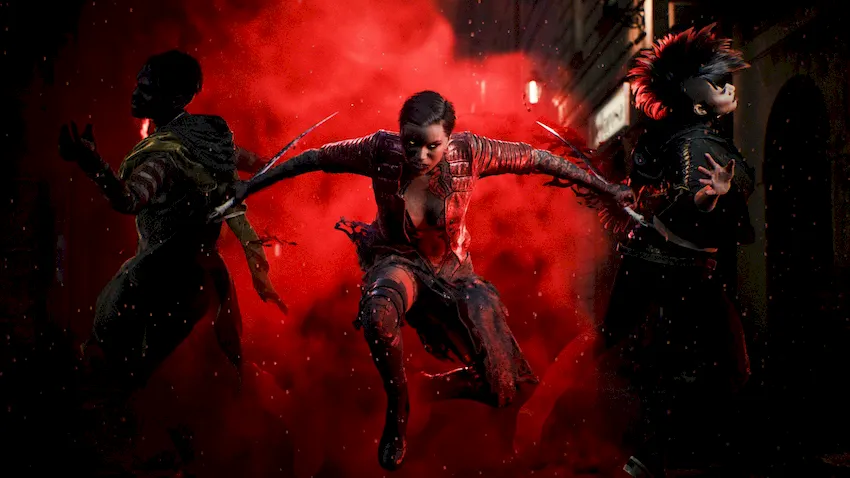
Sharkmob clearly believes in this technology and in finding solutions for game development rather than just throwing more people at the problem. As games become increasingly complex and expensive to develop, the underlying technologies must keep pace with the times. It’s not about replacing developers but making their lives easier.
“I think procedural content generation is a huge part of the future,” Rashidi says. “That’s why we invest so much in Houdini. I think many people, even here in the studio, were a bit afraid of the procedural approach. I don’t want to replace the artist or their expertise; I just want to remove a lot of the tedious, labor-intensive work between the creative, fun parts.”
“So, we’ve created a procedural content creation group here at Sharkmob. Mostly with the help of Houdini, we’re assisting almost all company employees involved in game creation or marketing to help them create content more efficiently, where we use their talents, their creativity, their artistic vision, or their design perspective. We’re just removing a lot of the annoying middle steps. Statues are a good example: instead of producing one statue every two or three days, they can make five statues in a day.”
“And this, I think, is really the future of game development because games are constantly getting bigger, there’s so much content in them. It’s impossible to have an art team of 200-300 people to create all that content. That’s what I’m very passionate about.”
“Right now, we have other tools in development, and we work with artists, asking: ‘What would you like? How can we make your life easier?’. This is very important because people don’t like manually piecing all these parts together. It’s about helping them.”
Thanks to this procedural push and in the absence of Bloodlines 2, Sharkmob finds itself in a peculiar position, bringing a modern triple-A shine to the beloved cult classic IP for the first time. Working with such a beloved cult classic IP can bring its own kind of pressure. However, this approach, according to Cortes, is necessary both for the IP itself and for the free-to-play space.
“It was important for us; we felt that we needed the IP to be in the spotlight,” Cortes says. “We truly believe the IP has a lot of depth, and while, of course, we could have done something much simpler, we felt that the stars aligned.”
“There were several reasons, one of which was that free to play is becoming a big thing. In the past, it was considered something out of the ordinary, but now it’s mainstream. And also, what people expect to get for free these days. In the past, people thought, ‘Okay, if it’s free, it must be crap.’ That’s not the case anymore; it’s free, but it needs to be of high quality.”
“Another thing that was very important to us is that we felt that this dark fantasy, this more mature game, was not represented in the multiplayer space. If you want something more cartoony or militaristic, it’s all there. But there was no free game in the mature space that I would want to play. And in more mature games, accuracy is expected to be higher as well.”
“But in the end, this game stands out from many others. And not just because of its accuracy but even because of its fantasy. It’s urban fantasy; anyone can become a vampire in the story. It’s strong fantasy, anyone can become it. Compared, say, to military themes, it can be challenging to relate to. But the vampire fantasy is very strong because at its core, it’s urban fantasy. It can be anything; it can have different directions, different styles, different music…”.
Well, things are certainly looking good for Sharkmob’s version of this fantasy. Last year’s early access of Bloodhunt was well-received by fans, and judging from what we’ve seen, there will be a lot more vampires in Prague this year.
Perhaps Bloodlines 2 is still far away, but the hunt continues.
The post has been updated 07.01.2024 01:24. There is new relevant information.
Any suggestions for an update? Write in the comments.


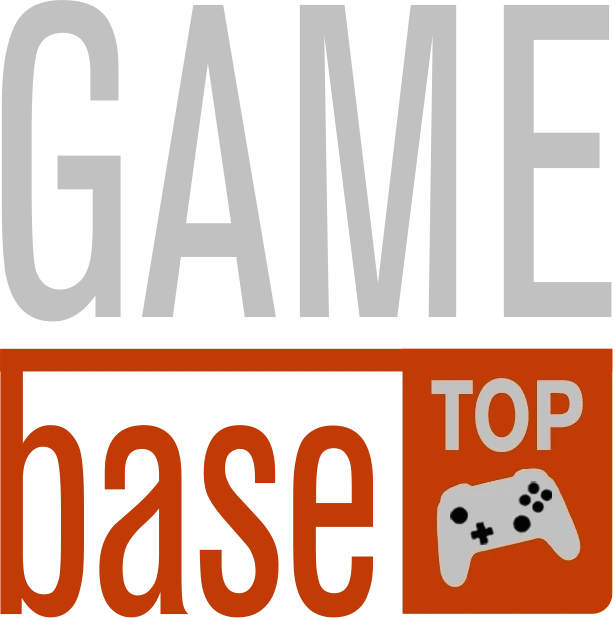

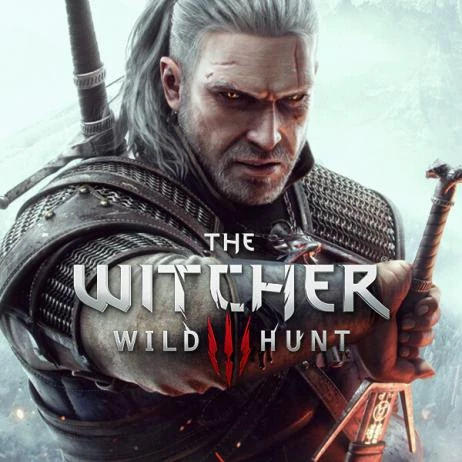
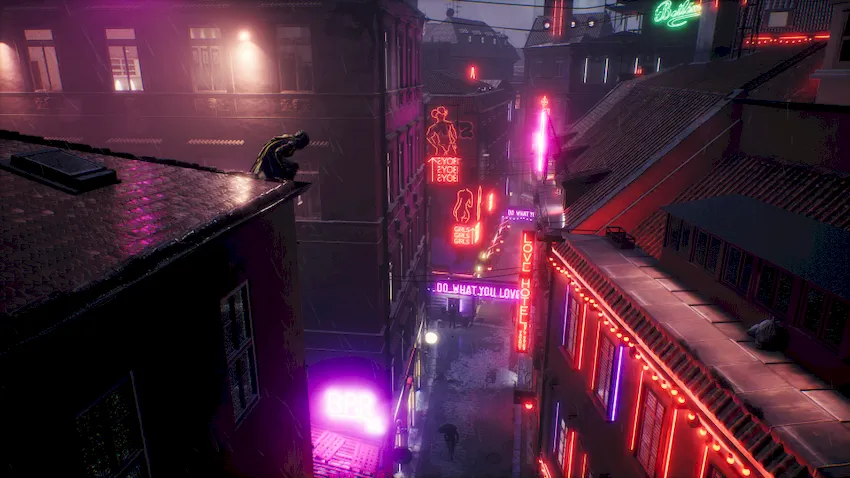
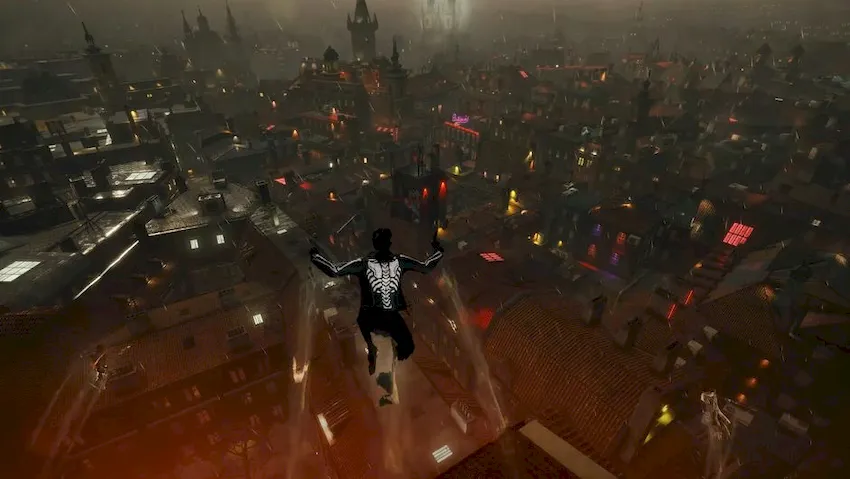
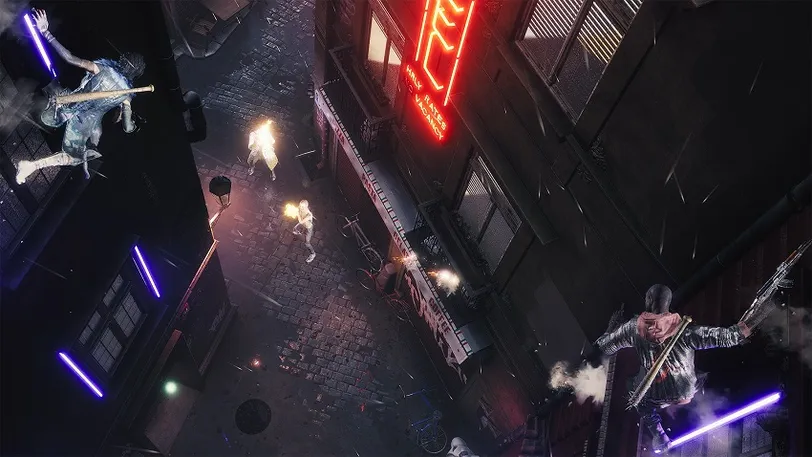
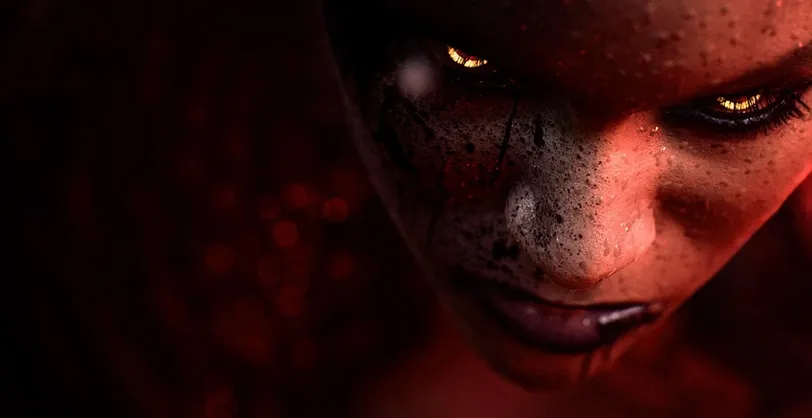
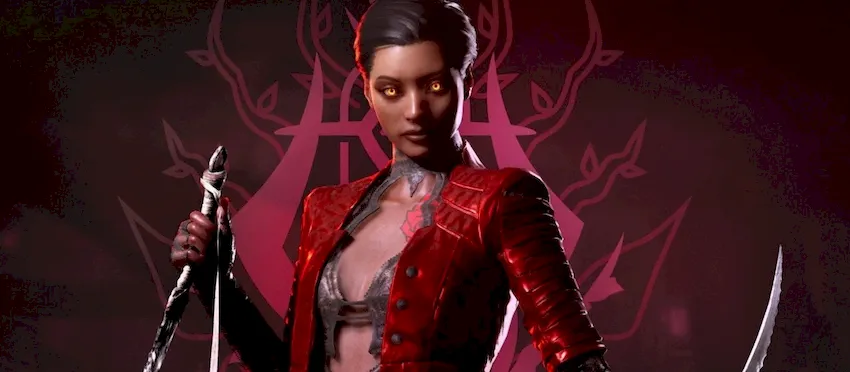
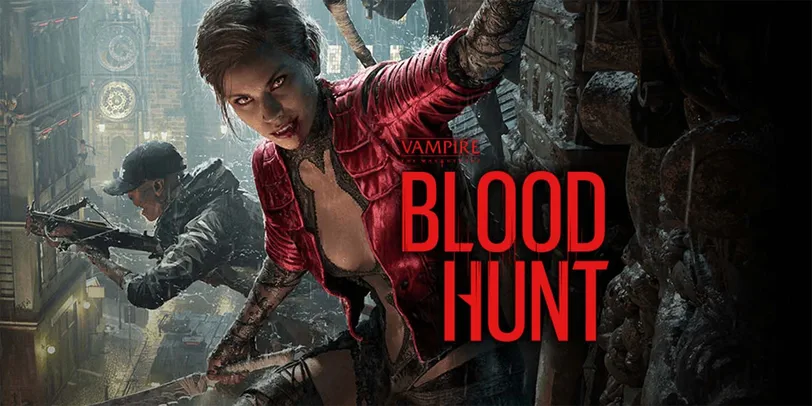
 1297
1297